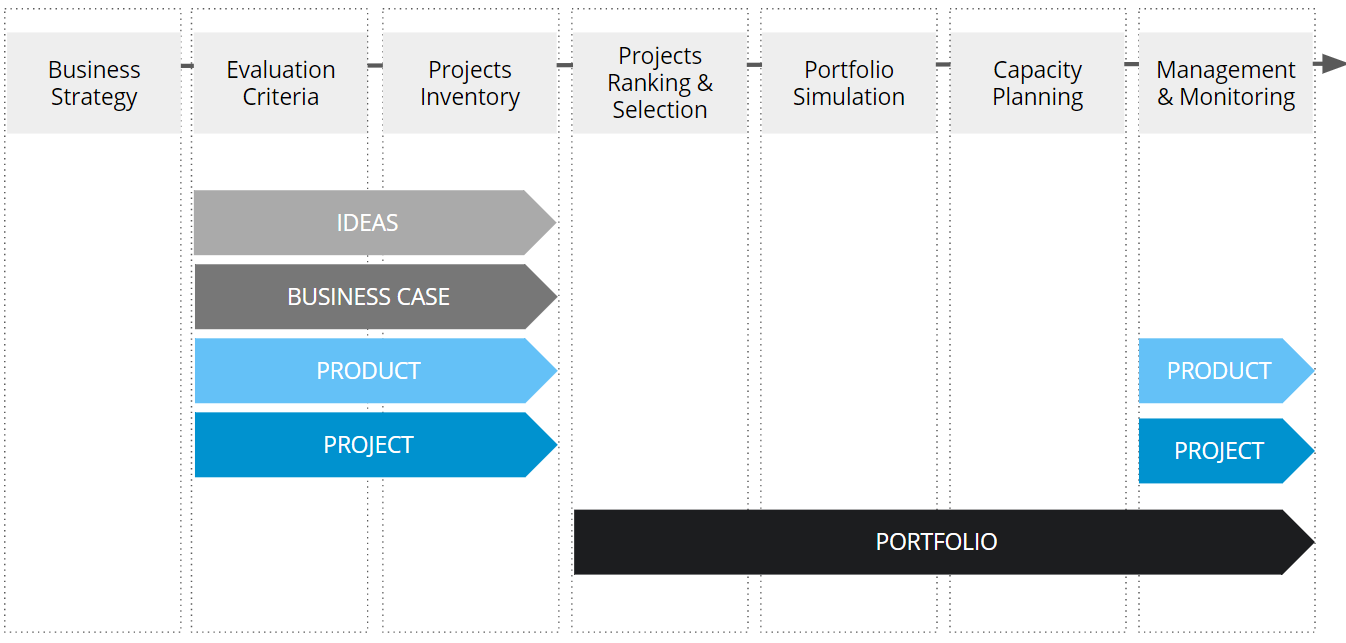Portfolio management involves the selection, prioritization, and control of an organization’s projects and programs. All of the decisions made related to managing a portfolio are aligned with an organization’s strategic objectives and capacity to deliver. The goal is to balance change initiatives and business-as-usual while optimizing return on investment.
Portfolio management involves the analysis of Debt vs. Equity, Growth vs. Safety, and various other trade-offs.
While specific Project Portfolio Management (aka PPM) processes will vary from one company to another, there are some overall best practices to keep in mind as you implement portfolio management at your organization.
A strategic portfolio management system requires a portfolio management process that usually involves an ongoing step-by-step process.
Identify your Business Goals and Strategy
Develop Project Evaluation Criteria
Create an inventory of candidate projects
Select the best projects
Build a Simulation of your Portfolio
Analyze Resource Capacity
Manage and Monitor
The purpose of Sciforma Portfolio workspaces is to provide Portfolio Managers with all the tools they need to manage their portfolios and the projects attached to them. With those workspaces, they will be able to assess the current state of the projects in a portfolio, determine the benefits of initiating certain business cases, allow rankers to rate potential business cases, and evaluate the capacity to start new projects in terms of budget and workload requirements.
Portfolio Ranking workspace | Portfolio Simulation workspace | Capacity Planning workspace | |
|---|---|---|---|
Stakeholders | Portfolio Managers | Portfolio Managers / PMO | Resource Managers |
Project Scope | Projects whose Nature is “Business Case” | Published projects of all Natures (Product, Project, Program and Business Case) | Published projects of all Natures (Product, Project, Program, and Business Case) |
Actions |
|
|
|
Outputs | Business Cases to be considered for launch | Business Cases to be launched | Capacity Forecasts updated to support ongoing and validated projects |
In Sciforma, Portfolio Folders can include Projects of the following Nature: Business Case, Products, Projects, and Programs.
In this theme, you will acquire the knowledge to manage Project Portfolios.
To learn more, select one of the topics below.
